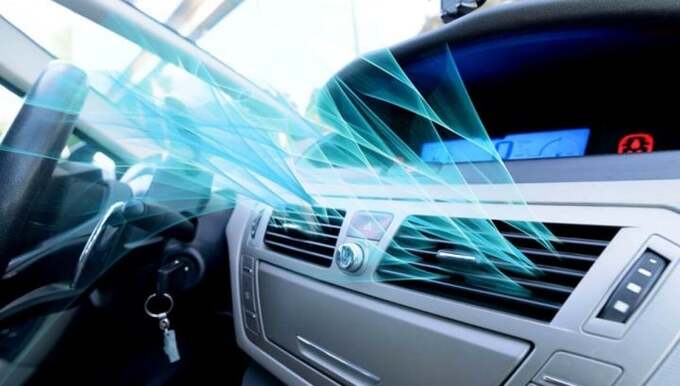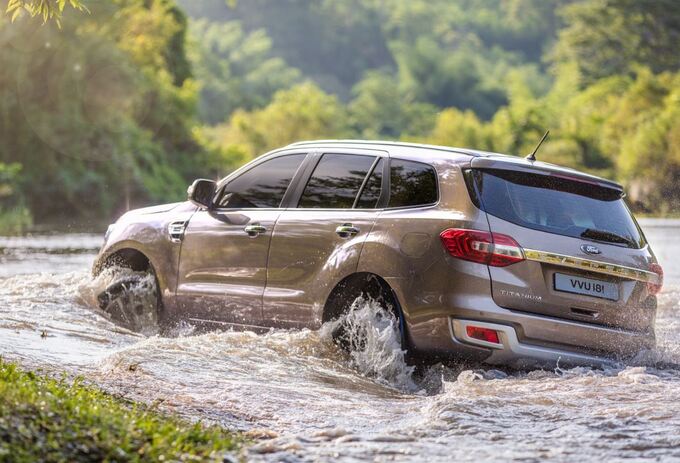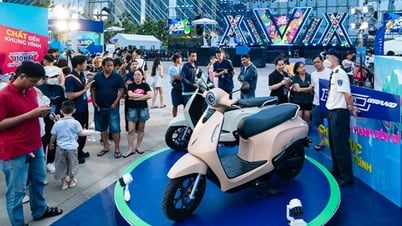On hot summer days, the air conditioning system in the car is indispensable, but sometimes even when the air conditioner is turned on, the air in the car is still hot. Why does this happen and what should be done to fix it?
During the hot summer months, your car’s air conditioning system will have to run continuously. But do you know the best way to cool your car? Here are the most common mistakes when using car air conditioning in the summer.
Leave the car in the sun too long
Parking your car in the sun for too long can cause the temperature inside the car to rise to over 60 degrees Celsius due to heat absorption. Heating elements generate heat when starting the engine. Therefore, when starting the engine, even if you turn on the air conditioner, it still feels hot.
In addition, leaving your car in the sun for too long not only increases the temperature inside the car but also causes the paint and interior of the car to quickly fade and deteriorate.

Parking your car in the sun for too long reduces the efficiency of the air conditioner (Illustration photo).
Therefore, when parking, try to find a shady place, next to buildings. If there is no other way, prepare a sunshade for the car, reflective panels inside the car also have certain effects, sunshades on the windshield.
In addition, car owners should leave the window open about 1-2 cm to allow air circulation in the car. Lowering the car window before turning on the air conditioner helps the heat in the car escape. Parts on the car such as the dashboard, leather seats, door panels and many other details are made of plastic. These details will give off an unpleasant smell when exposed to hot weather, lowering the window will help the heat and unpleasant smell escape. At the same time, car owners should turn on the fan, or use some other measures to push out all the hot air remaining inside the system before starting.
Turn on the air conditioner before starting the car
Turning on the air conditioner before the car has even started causes the battery to have to work to run the fan and also suffer a sudden load. This habit will over time affect the car's power generation system and reduce the battery's lifespan due to having to operate at too high a capacity.
Instead of turning on the air conditioner immediately, the owner can reduce the temperature in the car first by rolling down all the windows, letting in outside air, and turning on the fan at the highest speed to both push out the toxic air and cool down the cabin. After the car has been running for about 5-10 minutes, close the windows tightly and turn on the A/C, let in inside air, then gradually reduce the fan speed to the desired level of coolness.

Turning on the air conditioner as soon as you get in the car reduces the life of the device (Illustration photo).
Note that when turning on the air conditioning system, users should not adjust the highest cooling level immediately after turning on the air conditioner, because it will cause the condenser to work too hard, wasting fuel and easily leading to damage to the air conditioning system.
Sudden temperature adjustment
Using the air conditioner in a car is not simply turning on or off or increasing or decreasing the temperature. Suddenly reducing the temperature in the car when the car temperature is high causes the air conditioner to operate at full capacity. Drivers should set the appropriate air conditioner capacity based on the number of passengers and the load in the car.
According to many long-time users, the air conditioner should be cooled gradually, not at the highest cooling level, which will cause the condenser to work too hard. Avoid sudden changes in temperature that are too high or too low, causing thermal shock.
In addition to causing heat stroke, running the fan and setting the air conditioner at an irregular temperature can also cause negative health effects, including colds and sore throats. To protect the health of passengers and prolong the life of the car, doctors advise drivers to set the air conditioner in the car at a temperature above 25 degrees Celsius.
Turn off engine and air conditioner at the same time
Many people wait until they get out of the car to turn off the air conditioner, which causes heat shock when you step from the cabin into the hot sun.
Therefore, about 10 minutes before stopping the car, you should turn off the air conditioning system and open the windows to let the air escape, gradually reducing the temperature difference between inside and outside the car and helping the air conditioning system operate better before turning off the engine.
Turn on the air conditioner when entering flooded areas.
In case of driving in the rain and flooded areas, you should turn off the entire air conditioning system to avoid dirt and water from entering and jamming the fan, damaging the air conditioning system.

You should turn off the car's air conditioning system when driving into flooded areas (Illustration photo).
In addition to knowing how to use it effectively and avoiding mistakes when using the air conditioner, users should regularly maintain the car's air conditioning system. In addition, to keep the car's air conditioner working well during the peak season, users should also increase inspection and cleaning of the air conditioning system.
Specifically, after 5,000 km, car owners should check and clean the air conditioner filter. The heat exchange efficiency of the air conditioner is improved if the fan is clean. Another component that needs attention is gas, car owners need to pay attention to check and refill when needed.
Using car air conditioning properly will help cool more effectively and save fuel. To increase the life of the cooling system, car owners should pay attention to regular cleaning and maintenance.
(According to giadinhonline)
Source link



























![[Photo] National Assembly Chairman attends the seminar "Building and operating an international financial center and recommendations for Vietnam"](https://vphoto.vietnam.vn/thumb/1200x675/vietnam/resource/IMAGE/2025/7/28/76393436936e457db31ec84433289f72)








































































Comment (0)